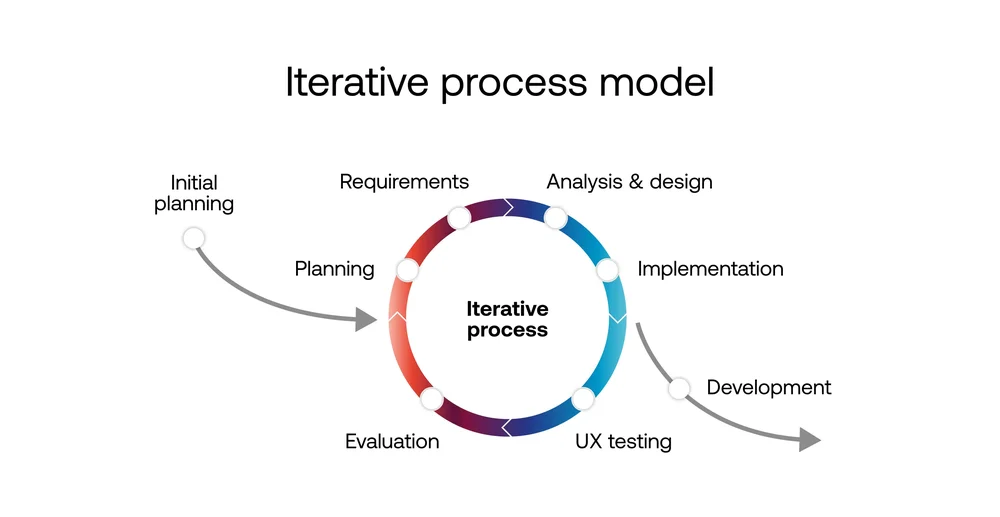
User experience (UX) design has become an integral part of creating products and services in the digital age. However, in order to create effective and satisfactory solutions for consumers, it’s essential to perform user research.
UX design can be described as coming up with hypotheses. Designers propose solutions based on business goals, technical requirements, market standards, and their knowledge of the customer and their needs. They create screens from various components, and arrange these screens into a path for the user to follow.
So, yes, the designer makes decisions, but we must treat these decisions as just hypotheses. And there are two ways to verify them – to verify if the designer made the optimal decision. You can do it after implementation, when users receive the finished product, and perform the verification on a living organism, or... You can do research to verify all assumptions while still at the design stage.
Performing user tests allows designers to gain a deeper understanding of the target audience. Analyzing needs, expectations and preferences lets them tailor the design to individual user requirements. Without direct contact with consumers, designers can make the mistake of assuming in advance that they what the customer needs – and this can lead to designs that are inadequate and not aligned with de facto expectations.
Let's discuss a very mundane example: a designer is faced with the challenge of designing a purchase process. Of course, he has some statistical data at his disposal on how this process has worked so far. He can also draw on general best practices, but… Good UX design is about tailoring solutions to specific contexts, and he won’t learn anything about this aspect from his data.
Sitting at his desk, he may not be aware of the practicalities of a seemingly simple activity like buying baby items. What factors does he need to consider if he wants to design the shopping path for a young mom who orders diapers on the app and picks them up at a store? He should take into account a hypothetical situation in which a young mom is on a walk in the park, pushing the stroller with one hand, and choosing a product, a pick-up method, and how to pay with the other hand at the same time. Designing this path is not only about the screens on the phone but also about the entire delivery and product pickup ecosystem, which must take into account the particularities of the situation: a sleeping baby in a stroller, limited opportunities to move around the store with it, all kinds of distractions.
UX is all about emotions. We need to really empathize with our users. To make the process go smoothly, we need to take care of the form and content of notifications. Think through every step in the customer's path so as not to cause unnecessary stress or irritation. Even small things like hints based on the type of article in question, related product categories or a user's purchase history can contribute to creating delightful experiences that will translate into building positive feelings towards the brand.

User research is also a great way to improve the UI. Collaborating with users at various stages of a project helps identify potential interface-related issues such as unclear navigation or difficulties caused by particular features. By observing how users interact with mockups, designers can adjust the UI at a high level of detail to make the final solution more intuitive and guarantee a high quality experience.
These days, it’s a must to make significant efforts to ensure a positive shopper experience. According to research, up to 88% of consumers are less likely to buy again if they have had to deal with an unfriendly UX (Source: Hubspot). What's more, users are far more likely to share negative experiences with their communities, and much less likely to tell those around them about positive experiences.
UX tests make it possible to detect potential problems and bugs in the user interface in the early stages of the project, that is, still at a relatively low cost. They allow your team to make any necessary corrections very quickly and, at the same time, eliminate the risk of more serious problems in later phases of development, when fixing even small bugs involves much higher programming and logistical costs.
Companies that regularly apply research and design principles based on user testing have increased their value by 211% more than the S&P 500 (the 500 largest publicly traded companies in the US) over a 10-year period (Source: Design Management Institute). Developers, in turn, spend half as much time on avoidable fixes, as UX testing can help provide a clear vision of the product to be built (Source: Forrester).
Performing tests with real users is not a big investment. In the first phases of the project, it’s enough to do your research on very small samples, such as 6 users. Even such a low number of testing sessions is already enough to eliminate basic uncertainties or to choose between two or three concepts. It is also not time-consuming: one working week is enough to conduct basic UX tests on a sample of 6 users, with all the preparation and analysis included.

Performing UX tests during the various phases of digital product development is the key to an iterative design process. Iteration allows for rapid design adjustments in response to user feedback. Co-creating a product with users stimulates innovation, and analyzing user needs and suggestions can lead to discovering new directions for a product or service. Actively listening and responding to feedback creates an atmosphere of openness to change and the pursuit of excellence.

Iterative design can often be compared to creating a sculpture. We start out with raw, shapeless mass. The plan is to first chip off large pieces to create the outline of our target form. With each incoming iteration, we choose to work with finer and finer tools, and our movements become more precise and detail-focused. It's the same with digital solutions. At first, our purchase path may look very similar to other such processes used by companies from diverse industries. In the next steps, we look at the details: the unique characterics of our industry, our products, our customers, their habits and even common stereotypes.
User research reveals the full picture to us in the same way, from the high-level to the more nuanced aspects. When testing our solutions, we first observe the most general user needs. This is the stage where we can eliminate the biggest problems. Only after we have removed the most important obstacles will users pay attention to the small elements they miss, the parts that are not entirely clear to them, or things that they find confusing because they are interpreted in a different way than the designers had in mind. The sum of minor tweaks and non-obvious innovations will then elevate the experience.
To sum up, if UX design is about making hypotheses, UX research is about verifying them. Thus, if we care about optimizing the development of digital products, user research has to be an integral part of the user experience design process. It allows us to understand user needs and expectations, optimize the user interface, increase satisfaction, reduce errors, personalize the experience and encourage innovation. Introducing user research in the early stages of a project is key to creating products and services that not only meet, but also exceed user expectations.